
By Thomas Tweed
Nine in 10 Americans gather around a table to share food on Thanksgiving. At this polarizing moment, anything that promises to bring Americans together warrants our attention.
But as a historian of religion, I feel obliged to recount how popular interpretations of Thanksgiving also have pulled us apart.
Communal rituals of giving thanks have a longer history in North America, and it was only around the turn of the 20th century that most people in the U.S. came to associate Thanksgiving with Plymouth “Pilgrims” and generic “Indians” sharing a historic meal.
The emphasis on the Pilgrims’ 1620 landing and 1621 feast erased a great deal of religious history and narrowed conceptions of who belongs in America – at times excluding groups such as Native Americans, Catholics and Jews.
Farming faiths and harvest festivals
The usual Thanksgiving depiction overlooks Indigenous rituals that give thanks, including harvest festivals.
The Wampanoag, who shared food with the Pilgrims in 1621, continue to celebrate the cranberry harvest, and similar feasts were held long before Columbus sailed and Pilgrims landed.
As I note in my 2025 book, “Religion in the Lands That Became America,” for instance, celebrants gathered for a communal feast in the late 11th century in the 50-acre plaza of Cahokia. That Native city, across the river from present-day St. Louis, was the largest population center north of Mexico before the American Revolution.

Daniel Acker for The Washington Post via Getty Images
Cahokians and their neighbors came in late summer or early autumn to give deities thanks, smoke ritual tobacco and eat special food – not corn, their dietary staple, but symbolically significant animals such as white swans and white-tailed deer. So, those Cahokians attended a thanks-giving feast five centuries before the Pilgrims’ harvest-time meal.
‘Days of Thanksgiving’
The usual depiction also de-emphasizes the tradition of officials announcing special “Days of Thanksgiving,” a practice familiar to the Pilgrims and their descendants.
The Pilgrims, who settled in what is now Plymouth, Massachusetts, were separatist Puritans who had denounced the Catholic elements that remained in the Protestant Church of England. They first sought to form their own “purified” church and community in Holland. After about 12 years, many of them moved again, crossing the Atlantic in 1620. The Pilgrims’ colony southeast of Boston was gradually absorbed into Massachusetts Bay Colony, founded in 1630 by a larger group of Puritans who did not split from England’s official church.
As historians have noted, Puritan ministers in Massachusetts’ state-sanctioned Congregational Church didn’t just speak on Sundays. Now and then they also gave special thanksgiving sermons, which expressed gratitude for what the community considered divine interventions, from military victory to epidemic relief.
The practice continued and spread. During the American Revolution, for instance, the Continental Congress declared a Day of Thanksgiving to commemorate the victory at Saratoga in 1777. President James Madison announced Days of Thanksgiving during the War of 1812. Leaders of the United States and the Confederate states did the same during the Civil War.
This tradition influenced Americans such as Sarah Hale, who called for a national Thanksgiving holiday. A magazine editor and poet best known for “Mary Had a Little Lamb,” she successfully pitched the idea to Abraham Lincoln in 1863.
Harvest feast of 1621
Many Americans’ view of “The First Thanksgiving” resembles the scene depicted in a Jean Ferris painting by that name. Finished around 1915, it is similar to another popular image painted around the same time, Jennie Augusta Brownscombe’s “The First Thanksgiving at Plymouth.”

Stedelijk Museum De Lakenhal/Wikimedia Commons
Both images distort the historical context and misrepresent Indigenous attendees from the nearby Wampanoag Confederacy. The Native leaders wear headdresses from Plains tribes, and there are too few Indigenous attendees.
Only one eyewitness account survives: a 1621 letter from the Pilgrim Edward Winslow. He reported that the Wampanoag’s leader, Massasoit, brought 90 men. That means, some historians suggest, the shared meal was as much a diplomatic event marking an alliance as an agricultural feast celebrating a harvest.
Ferris’ painting also implies that the English provided the food. Plymouth residents brought “fowl,” as Winslow recalled – probably wild turkey – but the Wampanoag added five killed deer. Even the harvest of “Indian corn” depended on Native aid. Tisquantum or Squanto, the lone survivor of the village that the Pilgrims called Plymouth, had offered lifesaving advice about planting as well as diplomacy.
The image’s cheerful scene also obscures how death had destabilized the area. The Pilgrims lost almost half their group to famine or exposure that first winter. After earlier European contact, however, even larger numbers of the Wampanoag had died in a regional epidemic that raged between 1616-1619. That’s why the Pilgrims found Squanto’s village abandoned, and why both communities were open to the alliance he brokered.
Pilgrims’ primacy
The Pilgrims were latecomers to the Thanksgiving table. Lincoln’s 1863 proclamation, published in Harper’s Monthly, mentioned “the blessing of fruitful fields,” but not the Pilgrims. Nor were Pilgrims depicted in the magazine’s illustrated follow-up. The page showed town and country, as well as emancipated slaves, celebrating the feast day by praying at “the Union altar.” For years before and after the proclamation, in fact, many Southerners resisted Thanksgiving, which they saw as a Northern, abolitionist holiday.
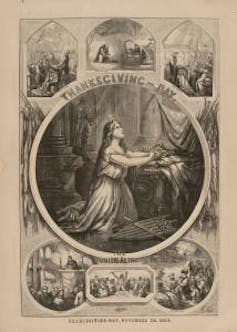
Syracuse University Art Museum
The Pilgrims’ absence makes sense, since they were not the first Europeans to land on North America’s eastern coast – or to give thanks there. Spanish Catholics had founded St. Augustine in 1565. According to an eyewitness account, the Spanish leader asked a priest to celebrate Mass on Sept. 8, 1565, which Native Americans attended, and “ordered that the Indians be fed.”
Two decades later, an English group had tried and failed to establish a colony on Roanoke Island, North Carolina – including a Jewish engineer. The English had more success when they settled Jamestown, Virginia, in 1607. A commander leading a new group to Virginia was instructed to mark “a day of Thanksgiving to Almighty God” in 1619, two years before the Plymouth meal.
But over the years, Plymouth’s Pilgrims still moved slowly toward the center of the national holiday – and America’s founding narrative.
In 1769, Plymouth residents promoted their town by organizing a “Forefathers’ Day.” In 1820 the Protestant politician Daniel Webster gave a speech commemorating the bicentennial of the landing at Plymouth Rock and praising the Pilgrims’ arrival as “the first footsteps of civilized man” in the wilderness. Then in an 1841 volume, “Chronicles of the Pilgrim Fathers,” a Boston minister reprinted the 1621 eyewitness account and described the shared harvest meal as “the first Thanksgiving.”
Rising immigration
Between 1880 and 1920, the Pilgrims emerged as the central characters in national narratives about both Thanksgiving Day and America’s origin. It was no coincidence that these years were the peak of immigration to the U.S., and many Americans saw the new immigrants as inferior to those who had landed at Plymouth Rock.
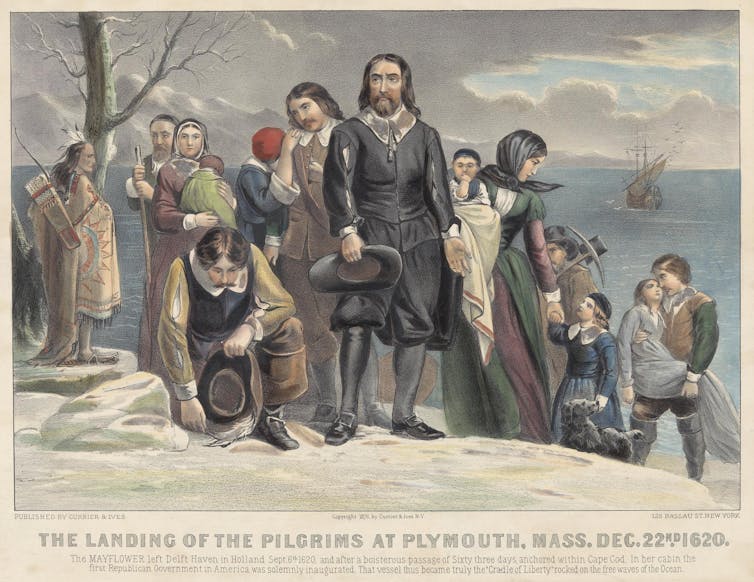
Mabel Brady Garvan Collection/Yale University Art Gallery
Irish Catholics already had a presence in Boston when the “Pilgrim Fathers” volume appeared in 1841, and more came after the Irish potato famine later that decade. Boston’s foreign-born population increased further as poverty and politics pushed Italian Catholics and Russian Jews to seek a better life in America.
The same was happening in many northern cities, and some Protestants were alarmed. In an 1885 bestseller called “Our Country,” a Congregational Church minister warned that “the glory is departing from many a New England village, because men, alien in blood, in religion, and in civilization, are taking possession of homes in which were once reared the descendants of the Pilgrims.”
During the 300th anniversary of the Pilgrims’ landing and harvest meal, celebrated in 1920 and 1921, the federal government issued commemorative stamps and coins. Officials staged pageants, and politicians gave speeches. About 30,000 people gathered in Plymouth, for instance, to hear President Warren Harding and Vice President Calvin Coolidge praise the “Pilgrim Spirit.”
Soon nativist worries about the newcomers, especially Catholics and Jews, led Coolidge to sign the Immigration Act of 1924, which would largely close America’s borders for four decades.
Americans kept telling the Pilgrim story after U.S. immigration policy became more welcoming in 1965, and many will tell it again next year as we celebrate the nation’s 250th anniversary. Understood in its full context, it’s a story worth telling. But we might use caution since, as history reminds us, stories about the country’s spiritual past can either bring us together or pull us apart.
![]()
Thomas Tweed is Professor Emeritus of American Studies and History at the University of Notre Dame.






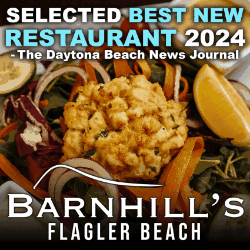


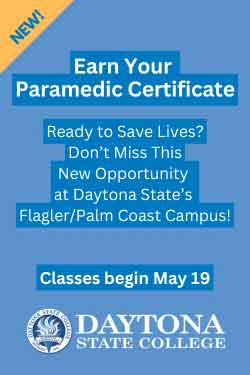





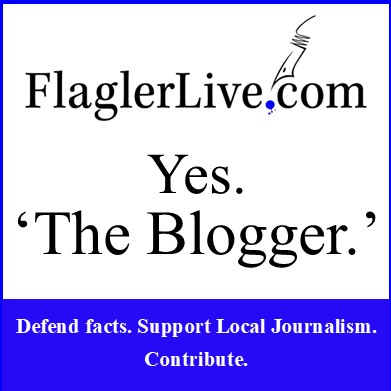










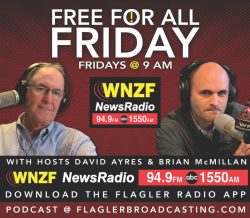

Atwp says
Good story. No mention of African Americans.
Atwp says
According to history African Americans were not allowed to participate, because the celebration occurred before the arrival of my enslaves fore fathers. According to history when we arrived we were not permitted because we were not part of the colonial narrative. Sounds very familiar.
Ray W. says
I wish to the FlaglerLive community a special and Happy Thanksgiving!
FlaglerLive says
Thank you Ray.
Pogo says
@Mr. Tweed (and my gratitude for FlaglerLive too)
https://arkansasadvocate.com/author/thomastweed/.
A privilege and pleasure, sir. God bless us all — as we bless each other.
Chauncey Freeman says
It would be helpful to the readers of this biased article that has wide syndicated distribution across America to reveal that the author is a Cultural Marxist who has no place commenting on American history or religion without full disclosure of his leftist dogma. Tweed is committed to Critical Theory which at its core is anti-religious and pointedly steeped in anti-Christian bigotry. With such widespread subversive infiltration of mass media by doctrinaire leftists it is no wonder the American people have lost their will to survive. They have been so demoralized and victimized by Critical Theory’s psychological subversion that they can’t even recognize that their heritage has been coopted and their institutions seized. Tragic. Here’s an overview of his ideology.
“Thomas A. Tweed’s academic work primarily focuses on American religious history, migration, and the intersections of religion and culture. While he engages critically with various ideological frameworks, labeling him strictly as a Marxist may not fully capture the nuances of his views.
Engagement with Marxism
Critical Theory: Tweed has engaged with critical theory and may incorporate Marxist perspectives in analyzing societal structures, particularly regarding religion and its role in culture and politics.
Comprehensive Approach: His works often explore how religion interacts with broader socio-economic contexts, which can include Marxist analyses, but he also considers various other theoretical frameworks.
In summary, while he may interact with Marxist ideas, he does not strictly identify as a Marxist. His scholarship reflects a broader engagement with complex social and cultural phenomena rather than adherence to a single ideology.” Sourced from Duck.ai
Pierre Tristam says
Leave it to an ideological half-wit to rely on AI, that fount of shoddy aggregation, to give us Tweed’s academic profile. I prefer to go to the source: his bio at Notre Dame: “Thomas A. Tweed is Professor Emeritus of American Studies and History at the University of Notre Dame, where he held the Harold and Martha Welch Professorship of American Studies and was affiliated with Latino Studies, Peace Studies, and the Ansari Institute for the Global Engagement with Religion. Tweed previously taught at UT Austin, University of Miami, and UNC Chapel Hill, where he was Zachary Smith Distinguished Professor and Associate Dean of Arts and Sciences. His publications, which include nine books, have been translated into five languages.” As for CRT, or even Marxism, if the half-wit can’t comprehend that both are academic theories that, while–like all theories, like all systems–nowhere near flawless, have far less to do with “ideology” than with a manner of thought. You can be a severe critic of or outright reject political Marxism, as history certainly has. You can still be an admirer of Marxist historians like Georges Lefebvre, whose histories of the French Revolution remain more essential reading than Michelet on the subject, or Eric Hobsbawm (to name just two), however challenging he was when our sadistic history teachers and professors assigned him by the brick. Same goes for CRT, whose basic theories are validated by the current administration every day, sometimes every hour. “Garbage” Somalis, anyone?